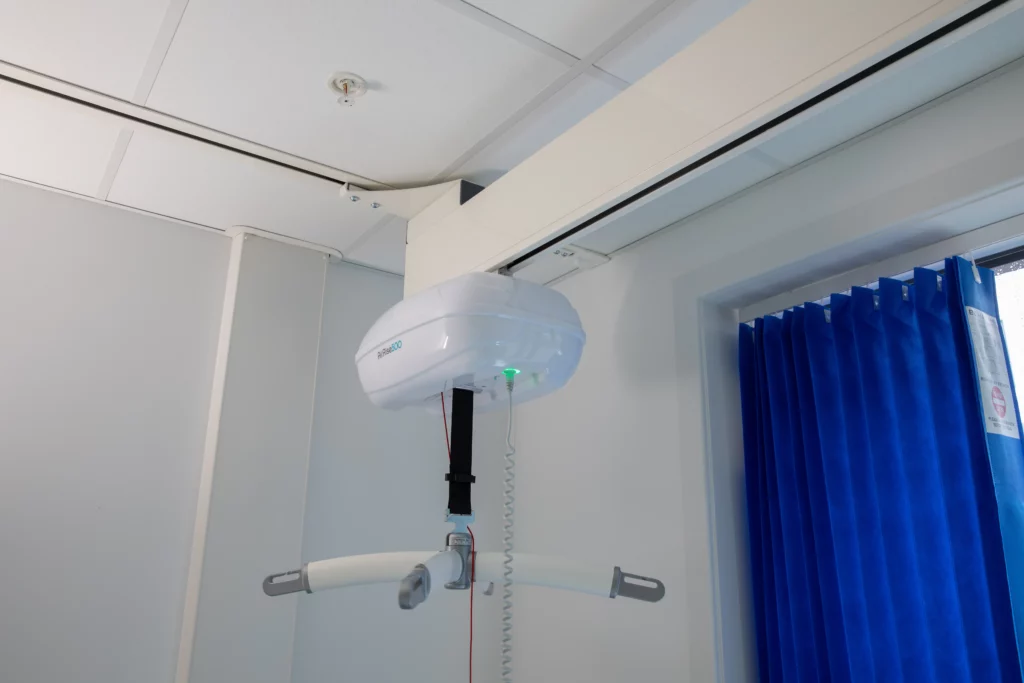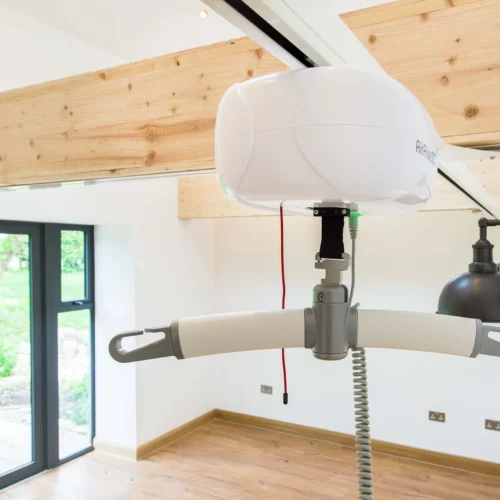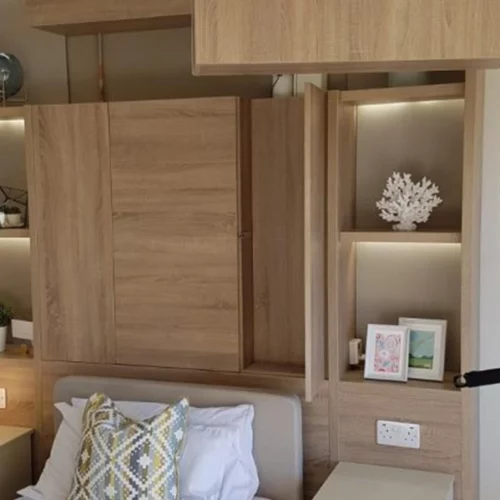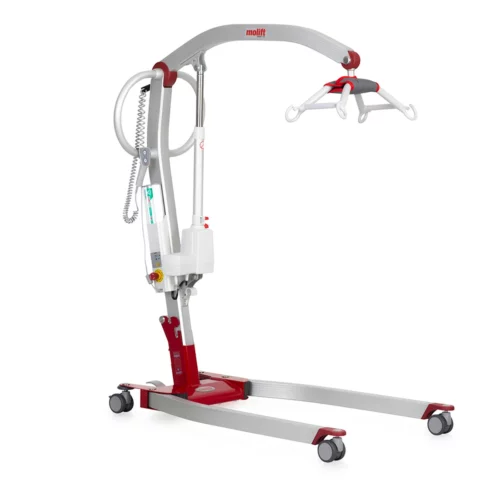Different Types of Hoists: An Essential Guide
Posted on 9 July 2024 By Aaron Stretton
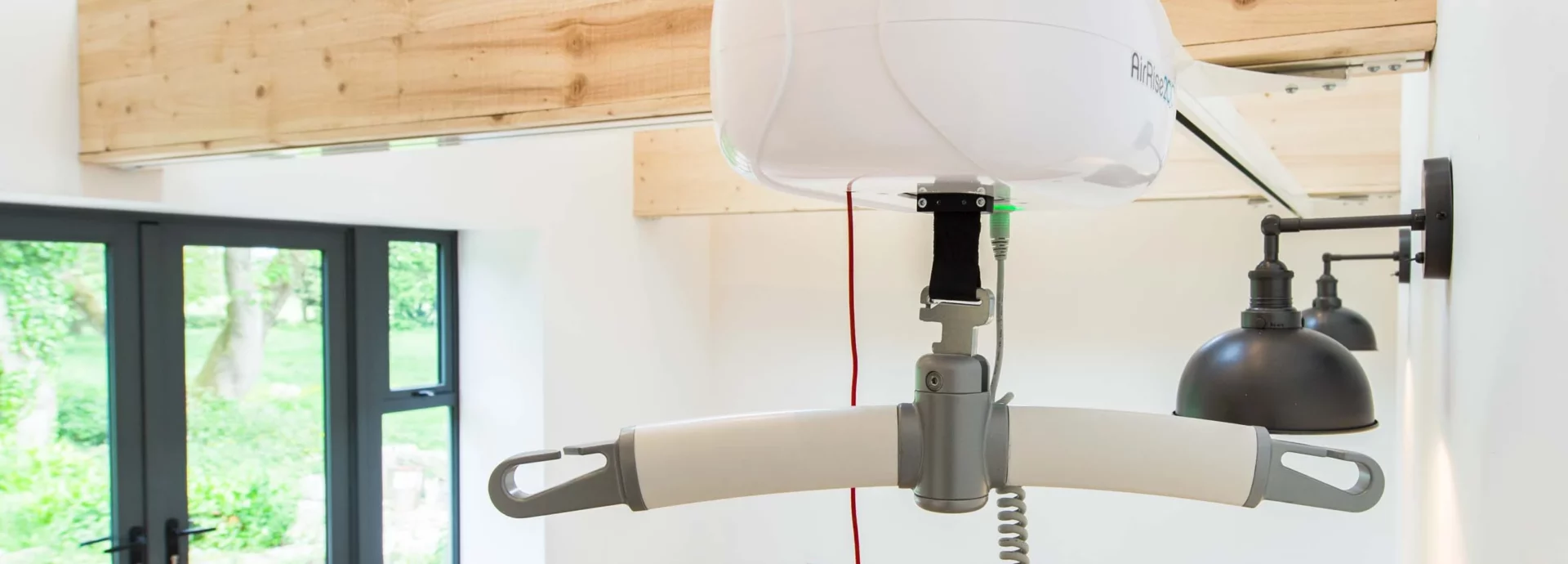
In This Article
When it comes to patient care, selecting the right type of hoist and hoist unit is essential for ensuring safety and efficiency in transfers. Understanding the various types and their specific features can greatly enhance patient comfort and caregiver convenience. Here’s a comprehensive guide to the different types of hoists and hoist units and what they offer.
Types of Hoists
Overhead Hoists (Ceiling Hoists)
Overhead hoists, also known as ceiling hoists, are mounted to tracks installed on the ceiling. These hoists allow for smooth and unobtrusive patient transfers across different areas of a room or even between rooms. They are ideal for permanent installations in hospitals, care homes, and private residences.
Features:
- Mounted on ceiling tracks
- Provides seamless and unobtrusive operation
- Suitable for frequent and varied transfers
Gantry Hoists
Gantry hoists provide a flexible, portable option for patient transfers. These systems consist of a freestanding frame that supports the hoist unit, making them ideal for temporary use or situations where ceiling installations are not feasible. Gantry hoists are often used in rental situations or homes where permanent installations are not possible.
Features:
- Portable and easy to set up
- No need for permanent installation
- Suitable for temporary or short-term use
Mobile Hoists
Mobile hoists are floor-based units equipped with wheels, allowing them to be moved around easily. They are versatile and can be used in various locations without the need for fixed installations. Mobile hoists are suitable for both home and care settings, offering flexibility and ease of use.
Features:
- Floor-based and mobile
- No installation required
- Versatile and easy to manoeuvre
Pool Hoists
Pool hoists are specifically designed to assist individuals in entering and exiting pools. These units are commonly found in leisure centres, hotels, and rehabilitation facilities with hydrotherapy pools. Pool hoists can be either fixed or portable, providing safe access to water-based activities for those with mobility impairments.
Features:
- Ideal for use around pools and spas
- Can be fixed or portable
- Enhances accessibility to water-based activities
Integralift Hoists (Hoists hidden in cupboard)
Integralift hoists are innovative solutions where the hoist is hidden within a cupboard or similar enclosure when not in use. This design maintains the room’s aesthetic while providing the functionality of a hoist when needed. Integralift hoists are perfect for environments where discretion and design are important.
Features:
- Hidden within a cupboard when not in use
- Maintains room aesthetics
- Functional and discreet
Types of Hoist Units
Fixed Patient Hoist Units
Fixed hoist units are ideal for rooms where regular transfers are needed. These units are permanently attached to the overhead track and cannot be removed without tools. They are designed for environments with a high degree of patient dependency, such as residential care facilities.
Features:
- Permanently attached to the track
- Ideal for highly dependent patients
- Equipped with spreader bars or tapes for lifting
Portable Hoist Units
Portable hoist units offer flexibility and convenience, especially in environments where a separate unit is not needed in every room. Lightweight and easy to detach, these units can be moved across various locations as required. They are suitable for less dependent patients and individual users at home.
Features:
- Detachable and lightweight
- Can be moved across different locations
- Easier to clean and repair
Manual Traverse Hoists
Manual traverse hoist units allow the caregiver to move the patient along the track by pushing or pulling the unit. This gives the caregiver complete control over the speed and positioning of the hoist. These units are cost-effective and provide greater flexibility in patient positioning.
Features:
- Caregiver-controlled movement
- Smooth and safe movement due to specially designed wheels
- Self-centralising above the patient during lifting and lowering
- More affordable than powered hoist units
Powered Traverse Hoists
Powered traverse hoist units offer the convenience of controlling all movements via a handset, eliminating the need for manual pushing or pulling. These units often return to a charging point automatically when not in use, making them ideal for independent self-hoisting patients and plus-sized individuals.
Features:
- Handset-controlled movements
- Automatic return to charging point
- Suitable for independent use and plus-sized patients
Bariatric (Plus-Sized) Hoist Units
Bariatric hoist units are designed to handle larger working loads, making them suitable for bariatric healthcare environments. These units can lift significant weights, with some models capable of handling up to 500kg. It is essential to use the appropriate spreader bar for maximum comfort and safety.
Features:
- Higher weight capacity
- Designed for bariatric patients
- Requires spacious and specially designed environments
Choosing the Right Hoist and Hoist Unit
Selecting the right hoist and hoist unit involves understanding the specific needs of the patient and the environment. Consider the level of dependency, the frequency of use, and the physical space available. Overhead hoists are ideal for seamless and frequent transfers, while gantry and mobile hoists offer flexibility for temporary or varied use. Pool hoists enhance accessibility to water-based activities, and Integralift hoists provide discreet functionality.
For hoist units, fixed units are best for highly dependent patients in permanent care settings, while portable units offer flexibility for less dependent individuals. Manual traverse hoists are cost-effective and provide caregiver control, whereas powered traverse hoists are ideal for independent use and plus-sized patients.
Summary
Whether you need a simple, portable manual traverse hoist unit, a powered bariatric hoist unit, or any other specialized hoist, there are many options available to meet your requirements. Always consider the key features and specific needs when choosing a hoist unit. For further advice or assistance, don’t hesitate to get in touch with a professional.
Enhancing patient care with the right hoist and hoist unit can significantly improve comfort and safety, making it a vital investment for any healthcare environment.
Speak to The Experts
Need assistance with product enquiries, general inquiries, or product support? Our Phonelines are open 9am - 5pm Monday to Friday
0113 519 0319
Or, fill out the form for a call back.

